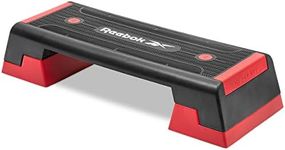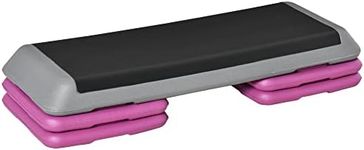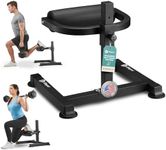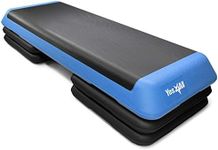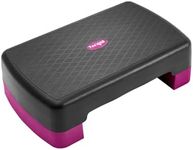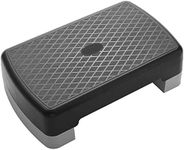Buying Guide for the Best Aerobic Steppers
Choosing the right aerobic stepper can make your workouts more effective, comfortable, and enjoyable. Aerobic steppers are used for step aerobics, strength training, and even stretching, so it's important to find one that matches your fitness level, workout style, and available space. When shopping for a stepper, focus on the features that affect safety, versatility, and durability. Understanding the key specifications will help you select a stepper that fits your needs and supports your fitness goals.Height AdjustabilityHeight adjustability refers to the ability to change the height of the stepper platform. This is important because it allows you to modify the intensity of your workout—higher steps make exercises more challenging, while lower steps are easier on the joints. Steppers typically offer two to four height settings, usually ranging from 4 to 8 inches. Beginners or those with joint concerns may prefer lower settings, while more advanced users or those seeking a tougher workout might opt for higher settings. Choose a stepper with adjustable heights if you want flexibility as your fitness level changes.
Platform SizePlatform size is the length and width of the surface you step on. A larger platform provides more space for movement, making it safer and more comfortable, especially for complex routines or users with larger feet. Smaller platforms are more compact and easier to store but may feel cramped during use. If you plan to do a variety of exercises or want extra stability, look for a wider and longer platform. If space is limited or you only do basic steps, a smaller platform may suffice.
Weight CapacityWeight capacity indicates the maximum user weight the stepper can safely support. This is crucial for safety and durability. Steppers typically support between 200 and 300 pounds, but some heavy-duty models can handle more. Always choose a stepper with a weight capacity that exceeds your body weight to ensure stability and longevity. If multiple people will use the stepper, consider the heaviest user.
Surface GripSurface grip refers to the texture and material of the stepper's top surface, which helps prevent slipping during exercise. A good grip is essential for safety, especially during fast-paced or sweaty workouts. Look for a stepper with a non-slip, textured surface. If you plan to use the stepper barefoot or with socks, make sure the grip is comfortable and effective. For those who sweat a lot or do high-intensity routines, a strong grip is even more important.
Stability and Base DesignStability and base design relate to how securely the stepper sits on the floor and how much it wobbles during use. A stable stepper has a wide, sturdy base and non-slip feet to prevent movement. This is important for safety and confidence during workouts. If you exercise on smooth or hard floors, make sure the base has rubberized or non-skid feet. For those who do vigorous routines or use the stepper for strength exercises, extra stability is a must.
Portability and StoragePortability and storage refer to how easy it is to move and store the stepper when not in use. Lightweight steppers are easier to carry, while stackable or compact designs save space. If you have limited workout space or need to store the stepper after each use, look for a model that is easy to move and fits in your storage area. If the stepper will stay in one place, portability may be less important.






